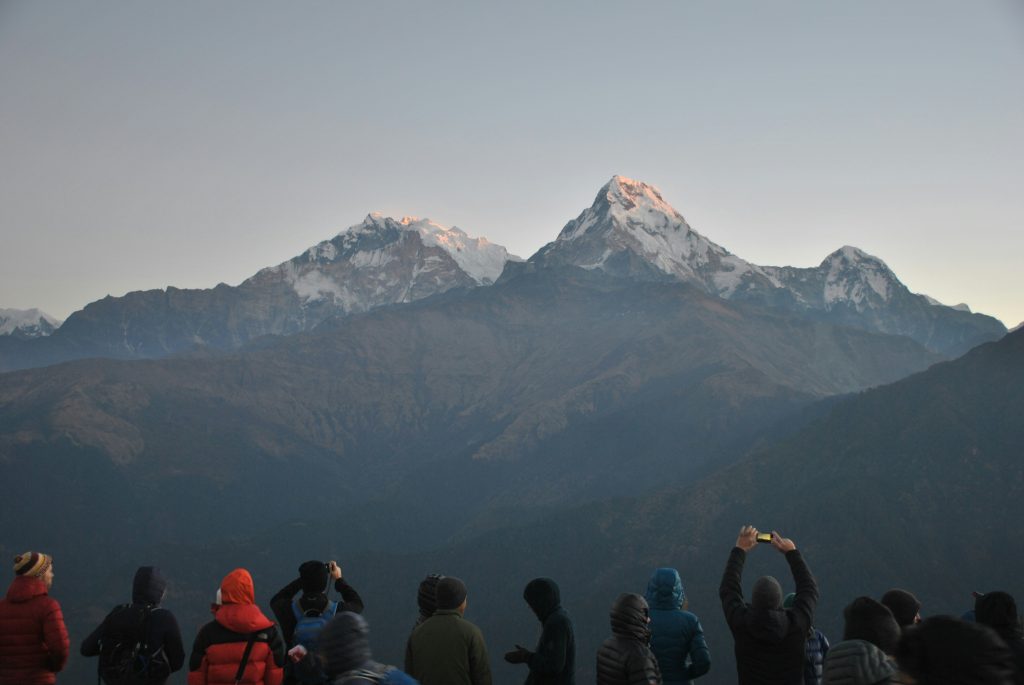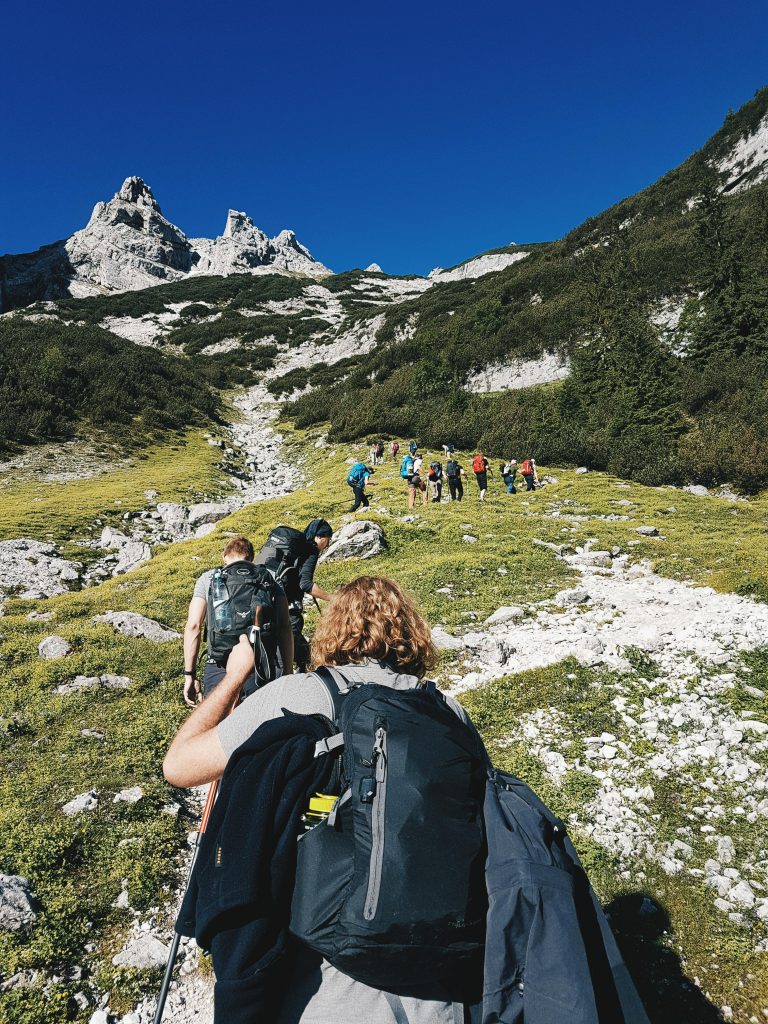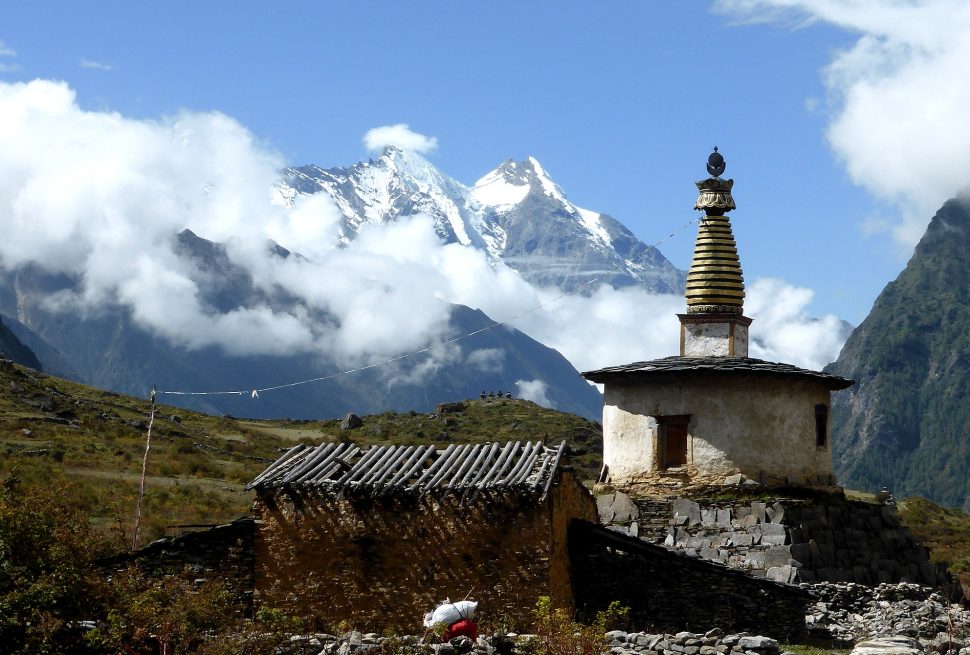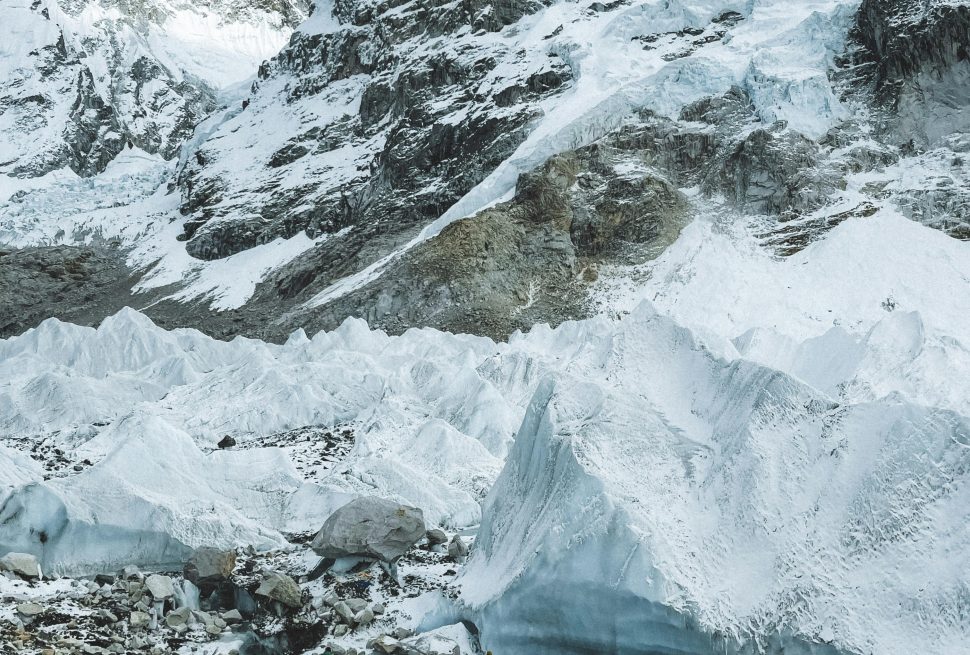Starting a trek journey in Nepal’s breathtaking landscapes is an exhilarating experience that requires careful preparation. Trek safety is paramount when venturing into the Himalayas, where challenges can be as towering as the peaks themselves. In this comprehensive guide, we’ll explore essential yoga trek safety tips to ensure your Nepal yoga adventure is both secure and transformative.
Preparing for Your Nepal Yoga Trek

Physical Conditioning for High-Altitude Trekking
Before your journey begins, it’s crucial to focus on physical preparation. A well-conditioned body is better equipped to handle the rigors of high-altitude trekking. Incorporate cardiovascular exercises, strength training, and flexibility work into your routine. Additionally, practice yoga regularly to improve your balance and breath control, which are invaluable skills for navigating challenging terrain.
Essential Gear for Trek Safety
Proper equipment plays a vital role in trek safety. Invest in high-quality, broken-in hiking boots to protect your feet and ankles. Furthermore, pack layers of moisture-wicking and insulating clothing to adapt to Nepal’s varied climate. Don’t forget a sturdy backpack, a reliable headlamp, and a well-stocked first-aid kit. These items form the foundation of your trek safety arsenal.
Understanding and Respecting Local Customs
Cultural awareness is an often-overlooked aspect of trek safety. Familiarize yourself with Nepalese customs and etiquette before your departure. Respectful behavior not only enriches your experience but also fosters positive interactions with local communities. This cultural understanding can be crucial in situations where you may need assistance or guidance from locals during your trek.
Obtaining Proper Permits and Insurance
Ensure all necessary permits are obtained for your chosen trekking route. These documents are not just legal requirements; they’re essential for trek safety, allowing authorities to track your journey. Moreover, comprehensive travel insurance that covers high-altitude trekking and emergency evacuation is non-negotiable. It provides a crucial safety net in case of unforeseen circumstances.
Navigating Health Challenges in the Himalayas
Recognizing and Preventing Altitude Sickness
Altitude sickness is a significant concern for trekkers in Nepal. Familiarize yourself with its symptoms, which can include headaches, nausea, and dizziness. To mitigate risks, a gradual ascent is recommended. Allow your body time to acclimatize by incorporating rest days into your itinerary. Remember, trek safety often means listening to your body and not pushing beyond its limits.
Staying Hydrated and Nourished
Proper hydration and nutrition are fundamental to trek safety. At high altitudes, your body requires more water and calories than usual. Drink plenty of fluids, even if you don’t feel thirsty. Pack energy-dense, nutrient-rich snacks to fuel your journey. Be cautious with water sources; use purification methods to avoid waterborne illnesses that could derail your trek.
Managing Common Trekking Injuries
While prevention is key, being prepared to handle common trekking injuries enhances overall trek safety. Learn basic first-aid skills, focusing on treating blisters, sprains, and cuts. Carry appropriate medications, including those for altitude sickness, diarrhea, and pain relief. Knowledge of these treatments can make a significant difference in remote areas where medical help may not be readily available.
Practicing Yoga for Physical and Mental Well-being
Incorporate yoga into your daily trekking routine to maintain physical and mental balance. Gentle stretches can alleviate muscle tension and improve flexibility, crucial for preventing injuries. Additionally, meditation and breathing exercises can help manage stress and anxiety, contributing to overall trek safety by keeping you mentally sharp and focused.
Weather Awareness and Environmental Safety
Understanding Nepal’s Seasonal Trekking Conditions
Trek safety is closely tied to weather awareness in Nepal’s diverse climate zones. Familiarize yourself with the seasonal patterns of your chosen trekking route. Monsoon season, typically from June to September, can bring heavy rains and increased risk of landslides. Conversely, winter treks require preparation for extreme cold and potential snow. By aligning your trek with optimal weather windows, overall safety can be significantly enhanced.
Preparing for Sudden Weather Changes
The Himalayan weather can be unpredictable, making flexibility a key component of trek safety. Pack versatile clothing layers that can be easily added or removed. Always carry rain gear, even during dry seasons. Additionally, be prepared to adjust your itinerary if weather conditions become unfavorable. Sometimes, the safest decision is to wait out a storm or turn back if conditions worsen.
Navigating Challenging Terrain Safely
Nepal’s varied landscape presents diverse challenges, from steep ascents to narrow paths along cliff edges. Proper trek safety involves careful foot placement and constant awareness of your surroundings. Use trekking poles to improve balance and reduce strain on your knees. When crossing streams or rivers, unbuckle your backpack’s waist strap to quickly remove it if you fall. These small precautions can prevent major accidents.
Wildlife Encounters and Environmental Respect
While rare, wildlife encounters can occur during your trek. Maintain a safe distance from any animals you may encounter. Additionally, practice Leave No Trace principles to protect the environment and ensure trek safety for future visitors. Proper waste disposal is crucial, as is respecting protected areas and not disturbing local flora and fauna. Your responsible actions contribute to the long-term sustainability of these trekking routes.
Group Dynamics and Communication for Trek Safety

Choosing the Right Trekking Partners
The composition of your trekking group can significantly impact overall trek safety. Choose companions whose fitness levels and trekking goals align with yours. Discuss expectations, concerns, and individual responsibilities before the trek. A harmonious group dynamic can lead to better decision-making and mutual support during challenging moments, enhancing the safety of all members.
H3: Effective Communication with Guides and Porters
If you’re trekking with a guide or porters, clear communication is essential for trek safety. Establish a good rapport and don’t hesitate to voice concerns or ask questions. Local guides possess invaluable knowledge about the terrain, weather patterns, and potential hazards. Their expertise can be crucial in navigating difficult situations and making informed decisions about route changes or rest stops.
Establishing Emergency Protocols
Before setting out, ensure all group members are familiar with emergency procedures. Designate meeting points in case the group gets separated. Agree on distress signals and ensure everyone knows how to use any communication devices you’re carrying. Having a clear plan of action for various scenarios, from minor injuries to severe weather, is a fundamental aspect of trek safety.
Maintaining a Supportive and Mindful Group Atmosphere
Incorporate elements of your yoga practice into your group dynamics. Encourage regular check-ins where everyone can share their physical and mental state. Practice mindfulness techniques as a group to stay present and aware of your surroundings. This collective approach to trek safety fosters a supportive environment where potential issues can be addressed before they escalate.
Navigation and Route Planning for Trek Safety
Mastering Map Reading and GPS Navigation
Developing strong navigation skills is crucial for trek safety in Nepal’s complex terrain. Familiarize yourself with topographic maps of your chosen route before departure. Learn to interpret contour lines, identify key landmarks, and estimate distances accurately. While GPS devices can be helpful, always carry physical maps as a backup. Practice using both in tandem to enhance your overall navigation capabilities and ensure you can find your way even if technology fails.
Planning Realistic Daily Itineraries
Overly ambitious trekking plans can compromise trek safety by pushing you beyond your limits. When planning your route, factor in ample time for rest, acclimatization, and unexpected delays. A good rule of thumb is to plan for shorter distances at higher altitudes. Be prepared to adjust your itinerary based on the group’s pace and any unforeseen circumstances. Flexibility in your plans can prevent exhaustion and reduce the risk of altitude-related illnesses.
Identifying Safe Campsites and Rest Areas
Choosing appropriate campsites is an often overlooked aspect of trek safety. Look for flat areas away from potential hazards like rockfall zones or avalanche paths. In areas prone to flooding, avoid camping near rivers or in low-lying areas. When staying in tea houses, assess their condition and emergency exits. Always inform someone of your intended route and expected arrival times at each stop.
Understanding Trail Markers and Local Signage
Familiarize yourself with the trail marking system used in Nepal. Different regions may use various types of markers, from painted symbols on rocks to prayer flags or cairns. Learn to distinguish official trail markers from informal ones that might lead you astray. When in doubt, consult your map or guide. Understanding local signage can significantly enhance your trek safety by helping you stay on designated paths and avoid dangerous areas.
Emergency Preparedness and Response
Assembling a Comprehensive First Aid Kit
A well-stocked first aid kit is essential for trek safety. Include items specific to high-altitude trekking, such as medication for altitude sickness and water purification tablets. Pack supplies for treating common injuries like blisters, sprains, and cuts. Familiarize yourself with the contents of your kit and how to use each item effectively. Regular checks and restocking of your first aid supplies should be part of your pre-trek preparation routine.
Recognizing Signs of Emergency Situations
Being able to identify when a situation has escalated from challenging to dangerous is crucial for trek safety. Learn to recognize signs of severe altitude sickness, hypothermia, and heat exhaustion. Pay attention to changes in weather patterns that could signal incoming storms. Stay alert to potential hazards in the terrain, such as unstable snow or loose rocks. Early recognition of these dangers allows for prompt action, potentially preventing serious incidents.
Effective Use of Emergency Communication Devices
In remote areas of Nepal, traditional communication methods may not be reliable. Consider carrying a satellite phone or personal locator beacon for emergencies. Understand how these devices work and practice using them before your trek. Establish a communication plan with your emergency contacts, including check-in times and procedures for initiating a rescue if needed. While these devices enhance trek safety, remember they are not a substitute for proper preparation and decision-making.
Basic Wilderness Survival Skills
While professional guides often accompany trekkers, having basic wilderness survival skills can significantly boost your trek safety. Learn techniques for finding and purifying water, building emergency shelters, and signaling for help. Understand how to navigate using natural indicators like the sun and stars. These skills can be invaluable if you find yourself separated from your group or in an unexpected survival situation.
Post-Trek Safety and Reflection
Gradual Reacclimation to Lower Altitudes
Trek safety doesn’t end when you complete your hike. As you descend from high altitudes, your body needs time to readjust. Plan for a gradual return to lower elevations, allowing your body to acclimate. Be aware that some altitude-related symptoms can occur even during descent. Continue to monitor your health and that of your group members. Stay hydrated and maintain a balanced diet to support your body’s recovery process.
Proper Gear Cleaning and Maintenance
After your trek, thorough cleaning and maintenance of your gear is an often overlooked aspect of trek safety. Inspect your equipment for any damage that may have occurred during the journey. Clean and dry all items thoroughly to prevent mold and extend their lifespan. Pay special attention to your boots, sleeping bag, and tent. Proper post-trek care ensures your gear will be ready and reliable for your next adventure.
Reflecting on and Documenting Your Experience
Take time to reflect on your trekking experience, paying particular attention to safety aspects. Document any challenges you faced and how you overcame them. This reflection can be invaluable for improving your trek safety practices in future expeditions. Share your insights with fellow trekkers or write a detailed account. Your experiences can contribute to the collective knowledge that enhances trek safety for the entire community.
Planning for Future Treks with Enhanced Safety Measures
Use the knowledge gained from your Nepal yoga trek to plan even safer future adventures. Identify areas where you can improve your preparation or skills. Consider additional training in wilderness first aid or advanced navigation. Research new gear or technologies that could enhance trek safety on your next journey. Each trekking experience is an opportunity to refine your approach to safety in the mountains.
Conclusion
Trek safety is paramount when embarking on a yoga adventure in Nepal’s awe-inspiring landscapes. By thoroughly preparing, staying informed, and remaining vigilant, you can significantly reduce risks and fully immerse yourself in the transformative experience of Himalayan trekking. Remember that safety is a continuous process, from pre-trek planning to post-trek reflection.
As you apply these trek safety tips, you’ll not only protect yourself but also contribute to the well-being of your fellow trekkers and the local communities that call these mountains home. We, the team of manasukh are committed to promote safe and responsible trekking practices, ensuring that every yoga enthusiast can explore Nepal’s wonders with confidence and peace of mind.
May your journey through the Himalayas be not only safe but deeply enriching, allowing you to connect with nature, culture, and your inner self. As you breathe in the crisp mountain air and stretch into your yoga poses against the backdrop of snow-capped peaks, let the principles of trek safety guide you towards an unforgettable and secure Nepal adventure.



